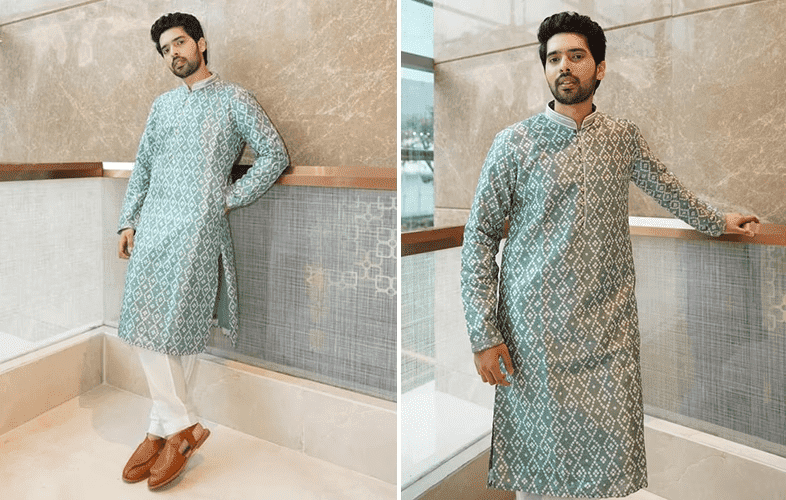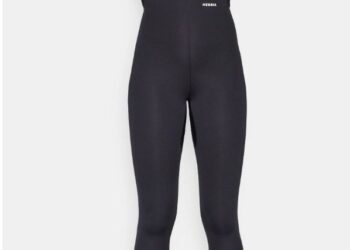Originating in South Asia, the traditional kurta has significantly influenced worldwide fashion while remaining true to its geographical and cultural roots. The kurta was first worn as an ethnic garment, primarily by males in nations like India and Pakistan. Over time, it has adapted to current trends, materials, and inspirations, becoming a multipurpose item in people’s closets everywhere. This article examines the journey of the men’s kurta, along with its historical origins, worldwide adoption, and modern modifications.
Historical Origins
The history of the kurta is intricately woven into the rich fabric of South Asian society, where it has long been a mainstay. The kurta was traditionally a straightforward, loose-fitting tunic that was either knee-length or longer and intended to be comfortable and flexible. Traditionally, it was worn with baggy pants like dhotis or pajamas. The men’s kurta changed over time, taking on assorted designs, cuts, and decorations to represent the area’s varied cultural practices and aesthetic tastes.
Ethical Fashion and the Kurta
The fashion industry is witnessing a notable transition towards ethical production standards due to the growing demand for kurtas worldwide. The focus shifts to the significance of ethical fashion and fair trade in creating kurtas as consumers become more aware of the places and methods of producing the clothing they purchase.
Transparency, sustainability, and equitable working conditions are prioritized ethically, guaranteeing that each individual involved in creating a kurta receives equal compensation and treatment. Today, many companies and campaigns support the creation of kurtas that respect workers’ rights and cultural heritage while also upholding the principles of dignity.
These organizations are redefining the fashion industry by emphasizing ethical production, proving that social responsibility and style coexist. Supporting these brands will help to create a fashion ecosystem that prioritizes people and the environment.
Contemporary Adaptations
Recently, men’s kurtas have been reimagined in many ways, fusing traditional patterns with innovative styles. Fusion clothing is being created by designers across the globe who are experimenting with cuts, fabrics, and patterns while fusing parts of diverse cultural apparel.
- Fabric Innovations: Although cotton and silk were the primary materials used to make traditional clothing, contemporary styles also use linen, denim, and even eco-friendly materials to meet the growing desire for sustainable fashion.
- Styling Variations: The modern kurta has evolved from an ethnic or ceremonial garment to one worn in professional, informal, and business contexts. To increase adaptability and appeal to a broader range of consumers, designers have developed shorter lengths and slim-fit designs, which they have combined with jeans, trousers, or even shorts.
- Global Influences: Original kurta patterns result from fusing parts of distinct cultural apparel with international fashion trends. The way the men’s kurta is combined with Western-style shirts or African designs with Japanese kimono-style sleeves, for example, demonstrates how versatile the item is.
- Celebrity Endorsement: Kurtas have become more popular worldwide due to celebrities and fashion influencers wearing them to high-profile events. Their fashion choices inspire and establish trends that impact the global perception and usage of kurtas.
Functionality and Versatility
The kurta’s timeless appeal stems from its extraordinary adaptability and practicality, allowing it to cross cultural and geographical boundaries and become a cherished garment everywhere. The kurta’s elegant yet understated shape offers many styling possibilities, making it appropriate for various settings, including more formal gatherings and everyday casual wear.
To accommodate a wide range of preferences and needs, designers have embraced the kurta’s versatility and introduced variations in fabric, cut, and ornamentation. Moreover, the kurta’s adaptability to various climates and settings contributes to its universal appeal. In warmer climates, lightweight textiles give comfort, while in colder climates, more decadent, layered designs offer warmth. This adaptability highlights the kurta’s usefulness and ability to connect with people from different cultural backgrounds, making it an essential universal wardrobe.
Conclusion
Men’s kurtas have gone beyond their traditional origins to become a worldwide fashion trend. Its transformation from a local ethnic garment to a global fashion icon is a testament to the strength of cross-cultural interaction and adaptability. The kurta’s appeal is expected to grow as designers keep developing the latest ideas and fusing various fashion inspirations, solidifying its position in the global fashion scene, and highlighting the classic charm of ethnic clothing.







